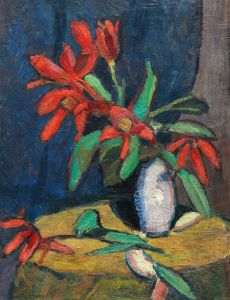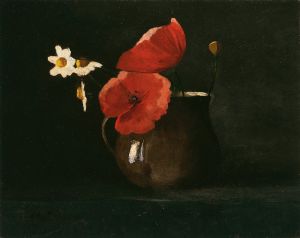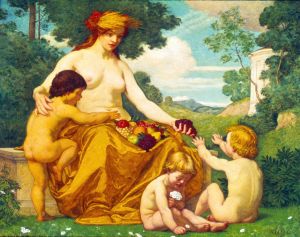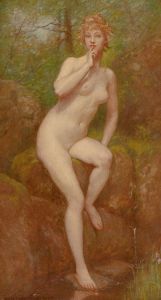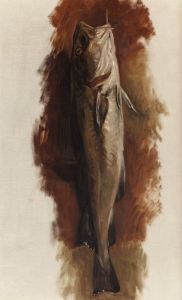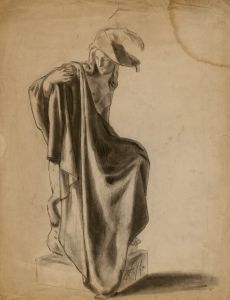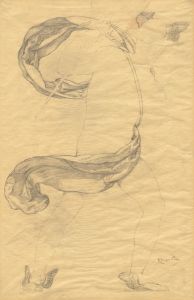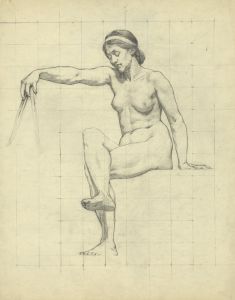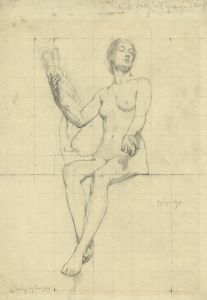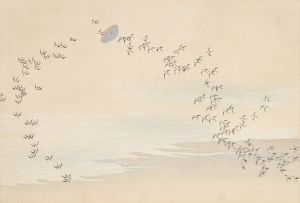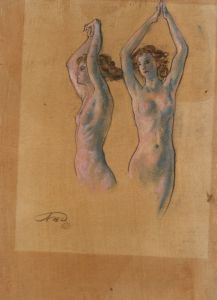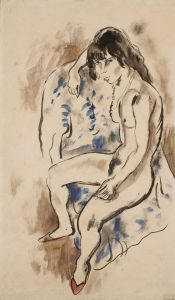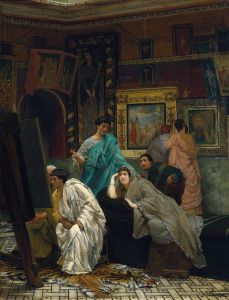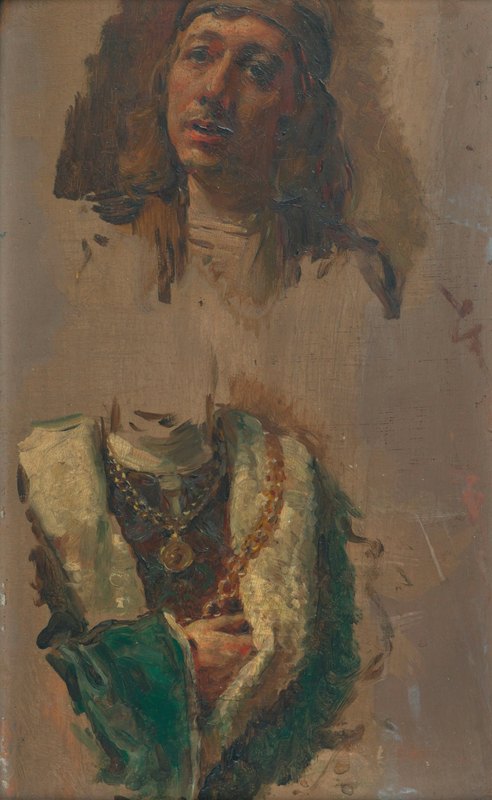
Study of man
A hand-painted replica of Kenyon Cox’s masterpiece Study of man, meticulously crafted by professional artists to capture the true essence of the original. Each piece is created with museum-quality canvas and rare mineral pigments, carefully painted by experienced artists with delicate brushstrokes and rich, layered colors to perfectly recreate the texture of the original artwork. Unlike machine-printed reproductions, this hand-painted version brings the painting to life, infused with the artist’s emotions and skill in every stroke. Whether for personal collection or home decoration, it instantly elevates the artistic atmosphere of any space.
Kenyon Cox was an American painter, illustrator, and writer, known for his academic style and contributions to the American art scene in the late 19th and early 20th centuries. One of his notable works is "Study of Man," which reflects his dedication to classical techniques and his interest in the human form.
Kenyon Cox was born on October 27, 1856, in Warren, Ohio. He studied at the McMicken School of Design in Cincinnati and later at the Pennsylvania Academy of the Fine Arts. In 1877, he traveled to Paris to further his education at the École des Beaux-Arts, where he studied under the guidance of renowned artists like Jean-Léon Gérôme. Cox's time in Paris deeply influenced his artistic style, grounding him in the principles of academic art, which emphasized traditional techniques, careful study of anatomy, and classical themes.
"Study of Man" is a testament to Cox's commitment to these principles. The work is a drawing that showcases his skill in rendering the human figure with precision and attention to detail. Cox was known for his ability to capture the subtleties of the human form, and this study exemplifies his mastery of anatomy and proportion. The drawing likely served as a preparatory study for a larger work or as an academic exercise to refine his skills.
Cox's approach to art was heavily influenced by the ideals of the Renaissance and the classical tradition. He believed in the importance of rigorous training and the study of classical art as a foundation for creating new works. This philosophy is evident in "Study of Man," where the focus is on the accurate depiction of the human body, devoid of extraneous details or narrative elements. The work is a pure exploration of form and technique, reflecting Cox's belief in the timeless value of classical art.
Throughout his career, Kenyon Cox was also an influential teacher and writer. He taught at the Art Students League of New York, where he imparted his knowledge of academic techniques to a new generation of artists. His writings on art theory and criticism further established him as a leading voice in the American art community. Cox advocated for the preservation of traditional artistic values at a time when modernist movements were beginning to challenge established norms.
"Study of Man" is representative of Cox's broader body of work, which includes murals, portraits, and allegorical paintings. His contributions to American art were significant, as he helped to bridge the gap between the academic traditions of the 19th century and the evolving art movements of the 20th century. Kenyon Cox passed away on March 17, 1919, but his legacy endures through his art and his influence on American art education.
In summary, "Study of Man" by Kenyon Cox is a reflection of the artist's dedication to classical art principles and his skill in depicting the human form. It serves as an example of his broader commitment to academic art and his influence as a teacher and writer in the American art scene.





